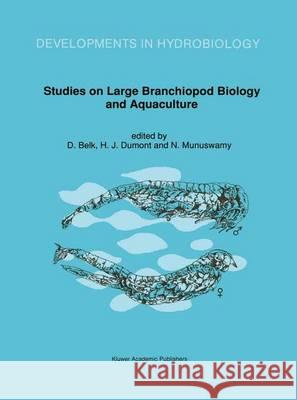Studies on Large Branchiopod Biology and Aquaculture » książka
topmenu
Studies on Large Branchiopod Biology and Aquaculture
ISBN-13: 9780792311690 / Angielski / Twarda / 1991 / 288 str.
Kategorie:
Kategorie BISAC:
Wydawca:
Kluwer Academic Publishers
Seria wydawnicza:
Język:
Angielski
ISBN-13:
9780792311690
Rok wydania:
1991
Ilość stron:
288
Waga:
0.86 kg
Wymiary:
27.9 x 21.0
Oprawa:
Twarda
Wolumenów:
01











